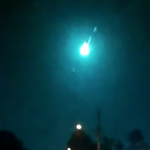Demand for electrical energy fell 5.6% year-on-year in February and thus recorded the lowest consumption since 2015, reported the Foundation for Electric Development (Fundelec).
“This month represented the most important fall in percentage terms (-5.6%) of the entire mobile year, followed by September (-5.5%) and January (-5.1%),” said Fundelec.
The decrease in consumption was for residential, commercial and industrial users, mainly due to the low temperatures registered during the month.
According to the document, “February had the lowest consumption in nominal terms since 2015”, something that “follows the recessive trend of the last four months of 2018 and January”.
The consumption of the City of Buenos Aires and the Buenos Aires Conurbation showed decreases, both in Edesur (4.4%) and in Edenor (6.1%), as well as in the rest of the country (6.2%).
The total net demand of the Wholesale Electricity Market (MEM) was 10,702.5 GWh; while in the same month of 2018 it had been 11,338.6 GWh1. In addition, there was a drop of 8.5% compared to January, when the MEM had a demand of 11,692.7 GWh.
Of total consumption in February, 43% (4,624.2 GWh) belongs to residential demand, while the commercial sector represented 29% (3,126.8 GWh) and the industrial sector 28% (2,951.5 GWh). In the year-on-year comparison, residential demand fell by 7.3%, while commercial demand fell by 4.8% and industrial demand fell by 7.1%.
In the last twelve months, electricity demand registered increases in March (0.7%), April (7%), June (5%), July (6.9%) and August (5.5%). Meanwhile, it had declines in May (-1.6%), September (-5.5%), October (-3.4%), November (-3.1), and January (-5.1%) .
In February, there were only three promotions in the electrical requirements of the MEM: Santa Cruz (11%), Misiones (5%) and La Rioja (3%), while Salta maintained the consumption of the previous year.
On the other hand, 23 provinces had declines: Catamarca (39%), La Pampa (12%), Entre Ríos (11%), Santiago del Estero (9%), Santa Fe (9%), Corrientes (9%), Jujuy (7%), Chaco (7%), Mendoza (6%), San Juan (5%), Córdoba (4%), Río Negro (4%), Neuquén (4%), San Luis (3%) , Formosa (3%), Tucumán (2%) and Chubut (2%).















